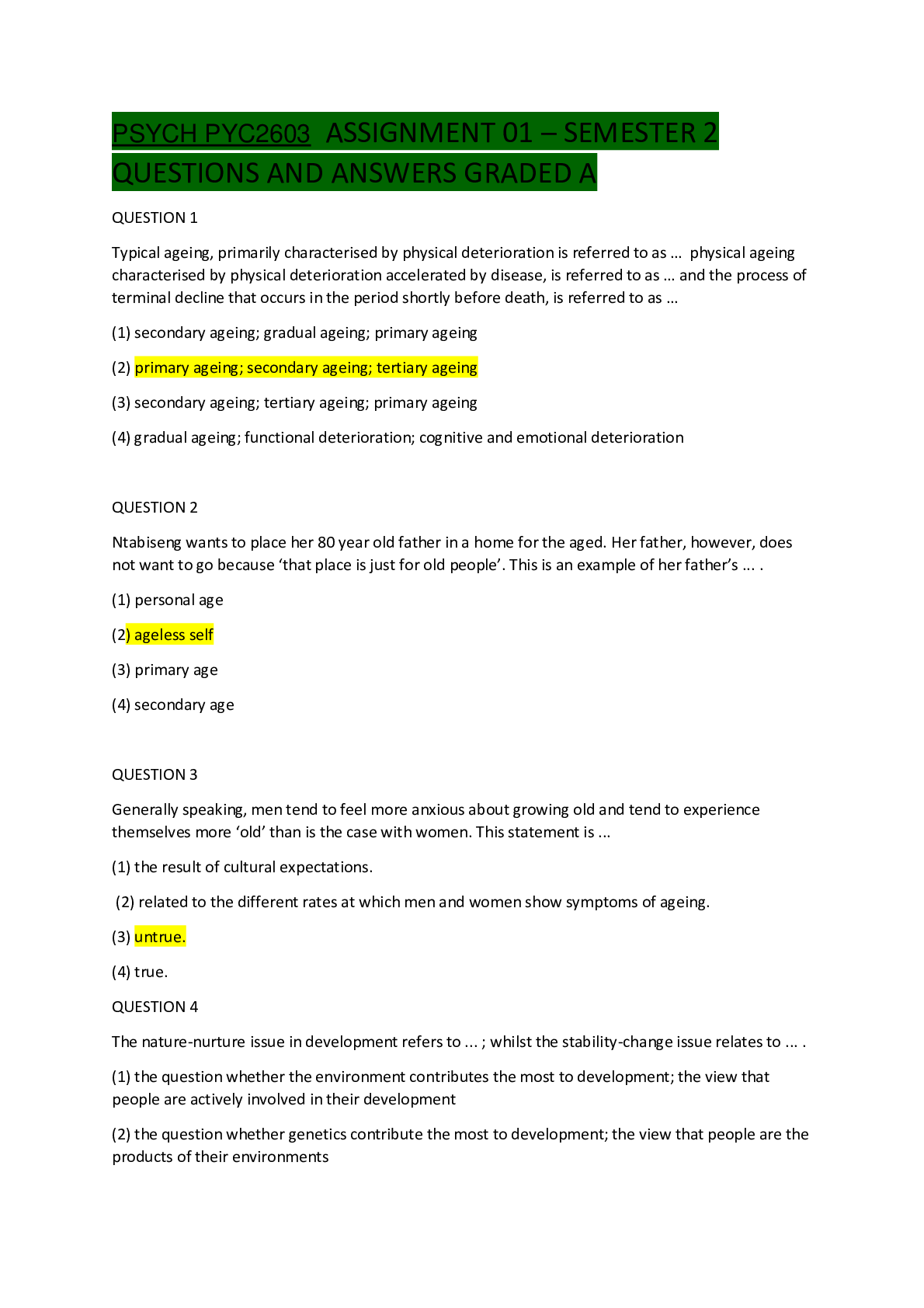BioChemistry > QUESTIONS & ANSWERS > biochemistry Exam 2 Questions And Answers (All)
biochemistry Exam 2 Questions And Answers
Document Content and Description Below
1. What type of carbohydrate contains more than two monosaccharides linked together? A. Monosaccharide B. Trisaccharide C. Disaccharide D. Polysaccharides E. Galactose 2. When glucose is joined ... to a molecules of fructose, what is the name of the carbohydrate formed? A. Glucose B. Sucrose C. Galactose D. Maltose E. Sucrase 3. Where does the electron transport chain and oxidative phosphorylation occur in the cell? A. Cytosol B. Golgi Apparatus C. Mitochondria D. Rough ER E. Ribosomes 4. What type of metabolic reaction involves the building of larger molecules? A. Catabolic reactions B. Anabolic reactions C. Glycogenolysis D. Glycolysis E. Beta Oxidation 5. Where is glycogen stored? A. Heart and Lungs B. Gall Bladder and Kidney C. Liver and Muscles D. Brain and Spine E. CNS and Lower Extremities Intermediate Questions (6-10) 6. What are artificial sweeteners Nutrasweet and Equal? A. Non carbohydrates B. Carbohydrates C. Amino Acids D. Monosaccharides E. Lactose 7. When sufficient oxygen is not present during strenuous exercise, the body converts pyruvate to which of the following? A. Lactate B. Glucose-6-phosphate C. Sucrose D. Acetyl CoA E. NADH 8. What is the name of the structure shown below? A. ADP B. AMP C. Adenosine Monophosphate D. Glycerol E. Adenosine Triphosphate 9. In a cell doing anabolic processes, approximately how many ATP molecules are hydrolyzed every minute? A. Less than 100,000 B. Less than 1,000,000 C. Approximately 1 – 2 million D. Approximately 60 -120 million E. 7.5 trillion 10. What is another name for the citric acid cycle? A. Tricarboxylic Acid (TCA) Cycle B. Electron Transport Chain C. Glycolysis D. Lytic Cycle E. Pentose-5-Phosphate Pathway Advanced (11-15) 11. Which of the following is the final electron acceptor in the electron transport chain? A. ATP B. Oxygen C. Water D. Ribose-5-phosphate E. Complex II 12. What percentage of human milk is made up of lactose? A. 100% B. 46 to 48% C. 26 to 38% D. 50% E. 6% to 8% 13. Maltose is linked by what type of glycosidic bond? A. 1,4 glycosidic bond B. 2,4 glycosidic bond C. 3,6 glycosidic bond D. 1,3 glycosidic bond E. 4,4 glycosidic bond 14. Which of the following is NOT a stage of catabolic reactions? A. Digestion B. Hydrolysis C. Protein Synthesis D. Oxidation E. Degradation 15. What is the alcohol group found in the isomerization of citrate show below? A. primary B. secondary C. tertiary D. quaternary E. methyl alcohol 1. Which of the following compounds has the largest negative value for the standard freeenergy change (delta G) upon hydrolysis? a. Acetic anhydride b. Glucose 6-phosphate c. Glutamine d. Glycerol 3-phophate e. Lactose 2. Which of the following is not nucleophilic? a. A proton b. A carbanion c. An imidazole d. A hydroxide e. A carboxylic acid 3. Which of the following is not electrophilic? a. A proton B. A sulfhydral c. A protonated imine d. A carbonyl group e. A phosphoryl group 4. The reaction of ATP+ADP+Pi is an example of a reaction? a. Hemolytic cleavage b. Internal rearrangement c. Free radical D. Group transfer e. Oxidation/reduction 5. Which of the following is true about oxidation-reduction reactions? a. They usually proceed through hemolytic cleavage b. During oxidation a compound gains electrons c. Dehydrogenases typical removes two electrons and two hydrides d. There are four commonly accessed oxidation states of carbon e. Every oxidation must be accompanied by a reduction 6. Which of the following compounds does not have a large negative free energy of hydrolysis? a. 1,3-bis phosphoglycerate b. 3-phosphoglycerate c. ADP d. Phosphoenolypyruvate e. Thioesters (e.g. acetyl-CoA) 7. The structure of NAD+ does not include? a. A flavin nucleotide b. A pyrophosphate bond c. An adenine nucleotide d. Nicotinamide e. Two ribose residues 8. Which of the following reactions in glycolysis requires ATP as a substrate? a. Hexokinase b. Glyceraldehyde-3phosphate dehydrogenase c. Pyruvate kinase d. Aldose e. Phosphoglycerate kinase 9. Which of the following reactions in glycolysis produces ATP as a product? a. Hexokinase b. Glyceraldehyde-3-phosphate dehydrogenase c. Pyruvate kinase d. Aldose e. Phophosfructokinases-1 [Show More]
Last updated: 2 years ago
Preview 1 out of 35 pages
.png)
Buy this document to get the full access instantly
Instant Download Access after purchase
Buy NowInstant download
We Accept:

Reviews( 0 )
$7.00
Can't find what you want? Try our AI powered Search
Document information
Connected school, study & course
About the document
Uploaded On
Jul 06, 2022
Number of pages
35
Written in
Additional information
This document has been written for:
Uploaded
Jul 06, 2022
Downloads
0
Views
100

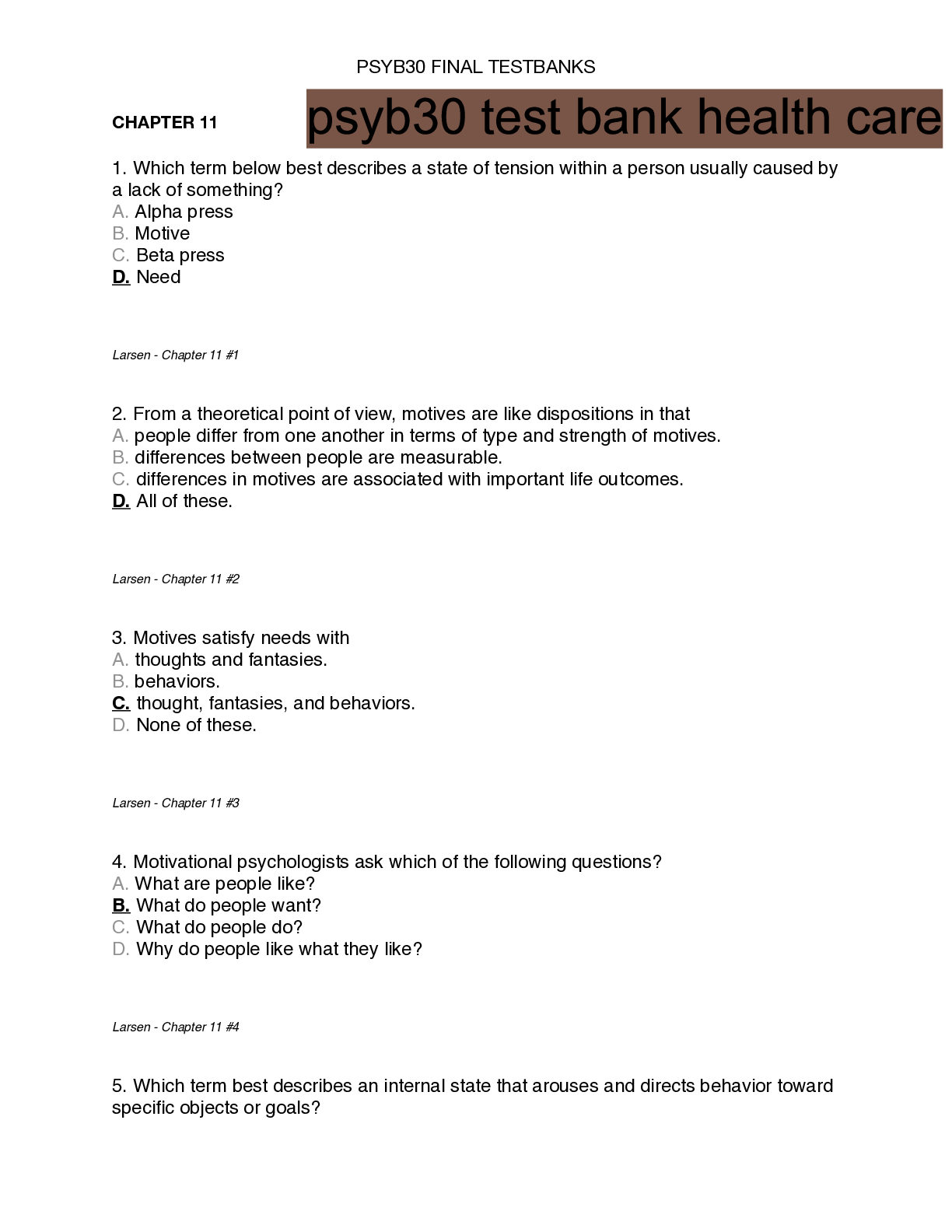











.png)
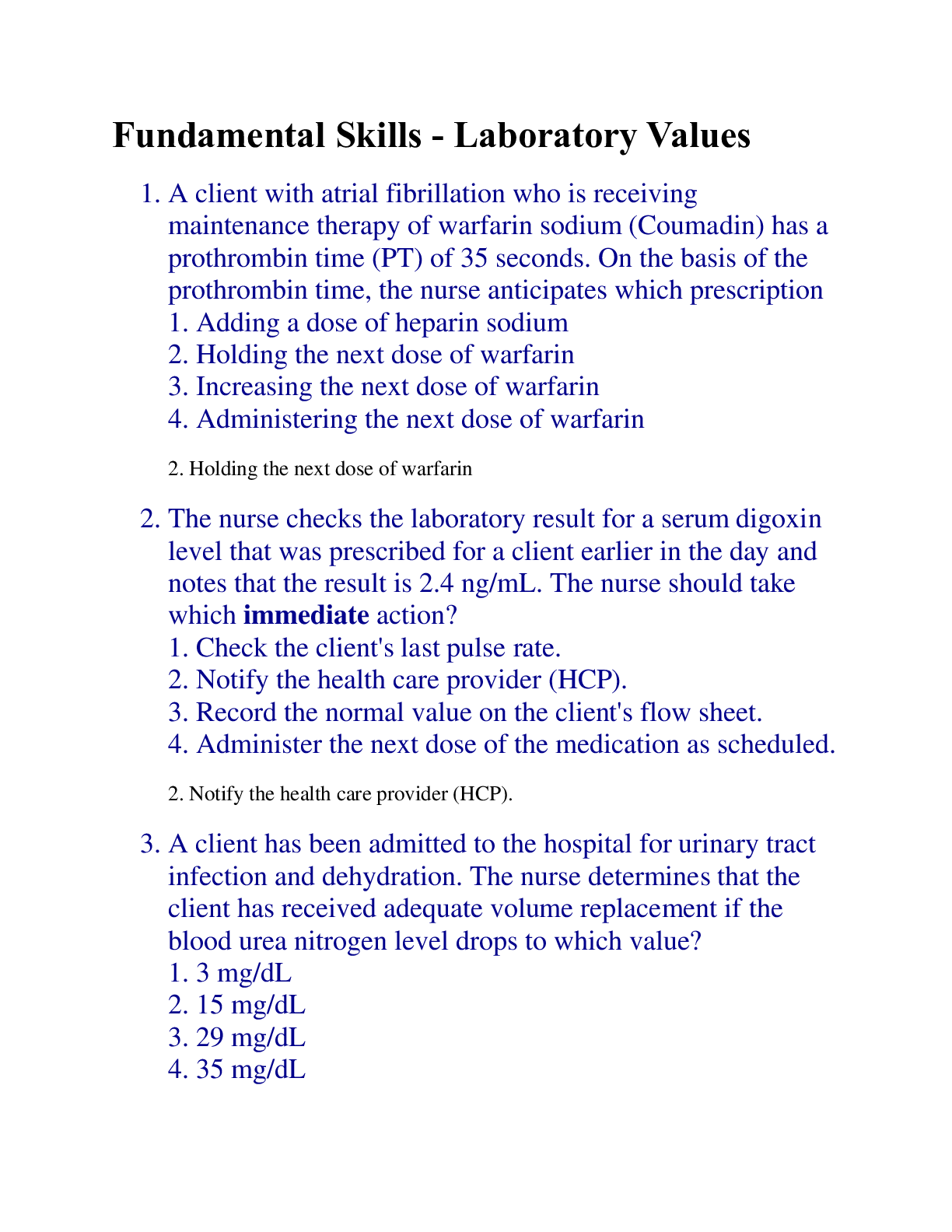

, 100% Correct, Download to Score A.png)
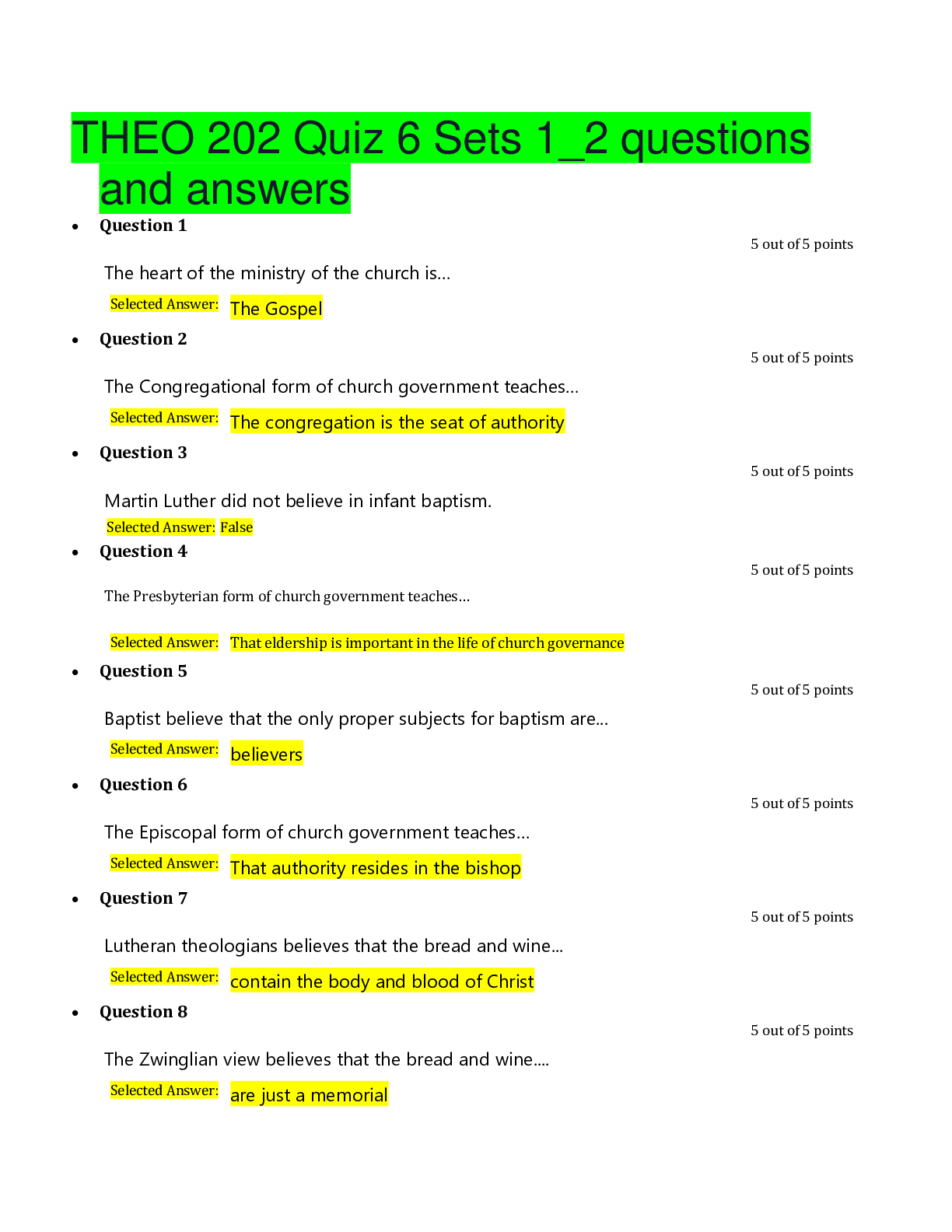
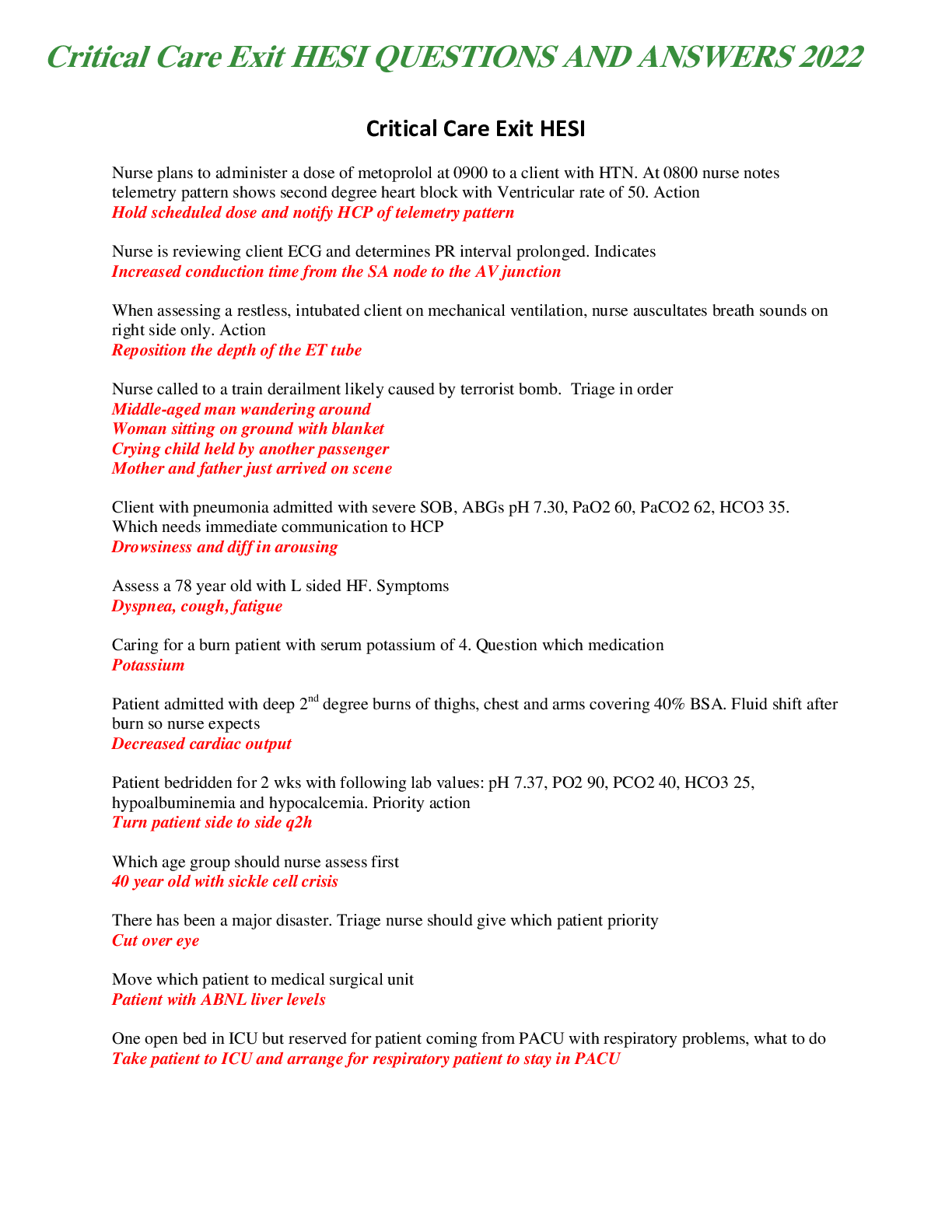
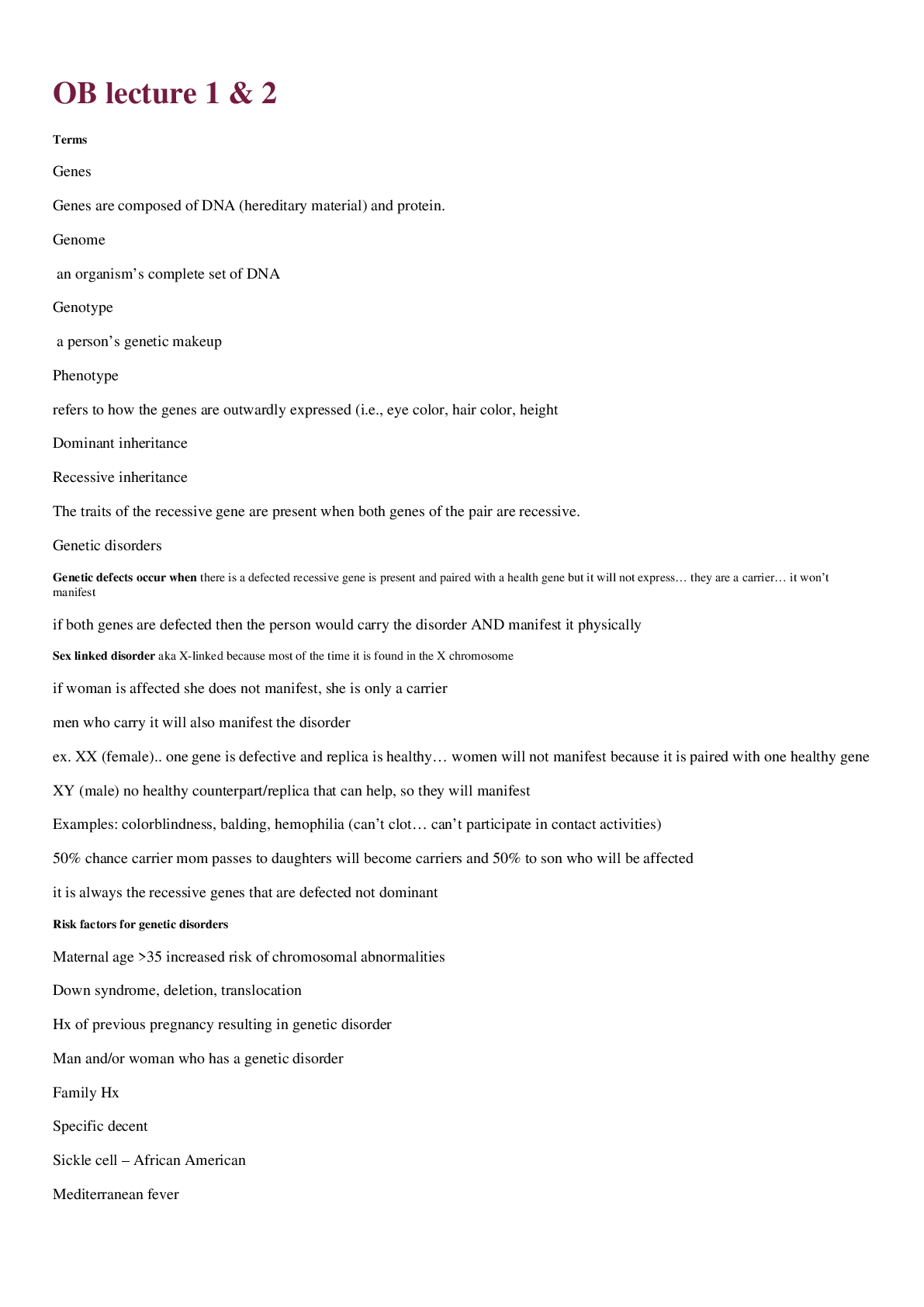

.png)

